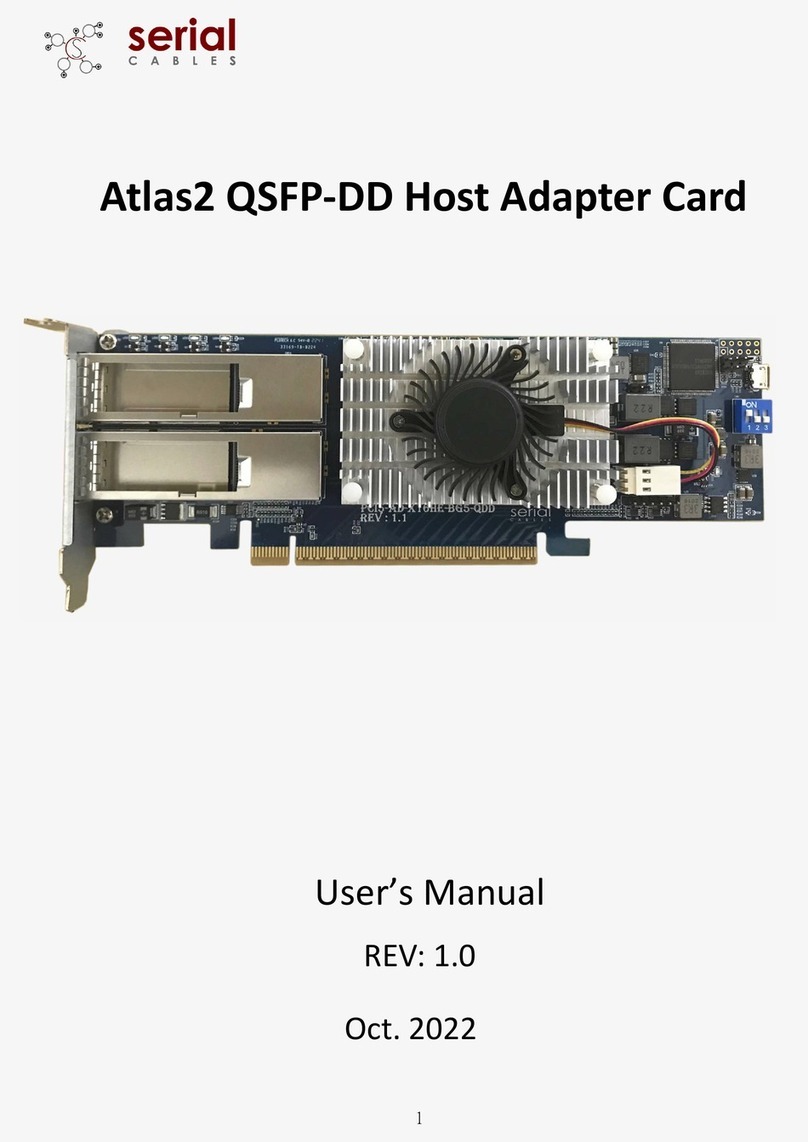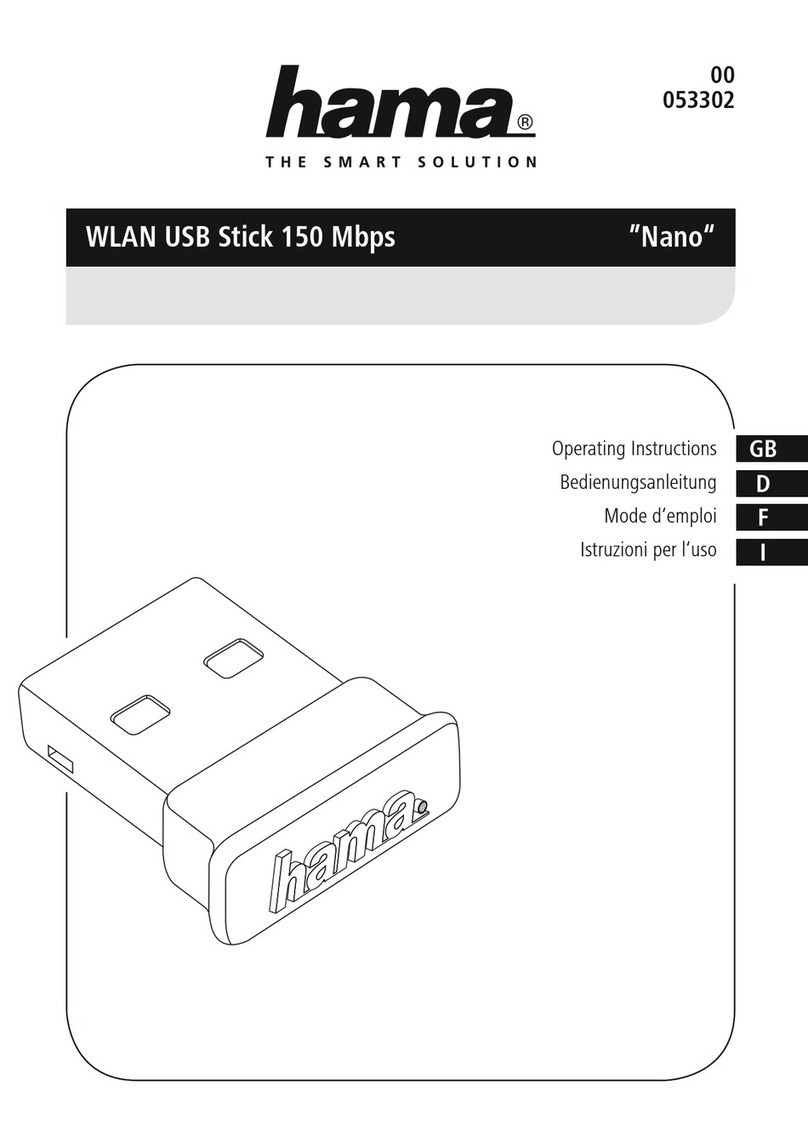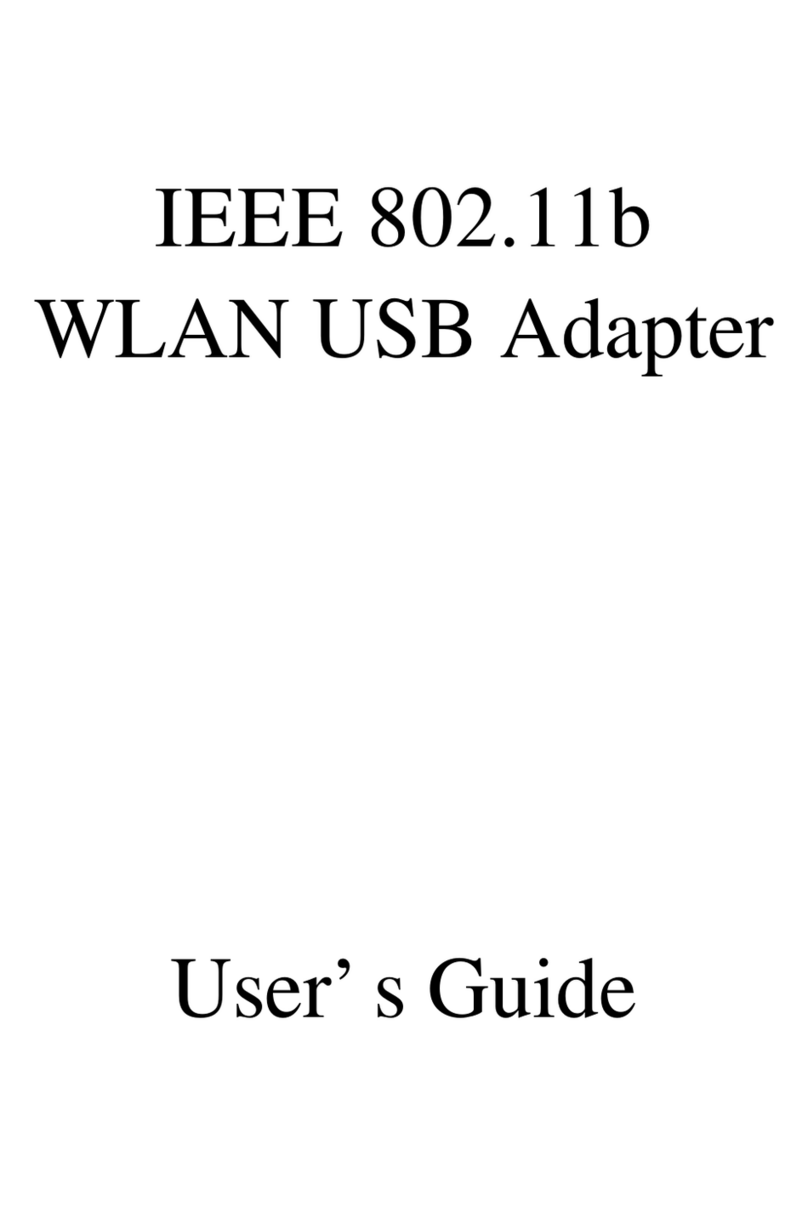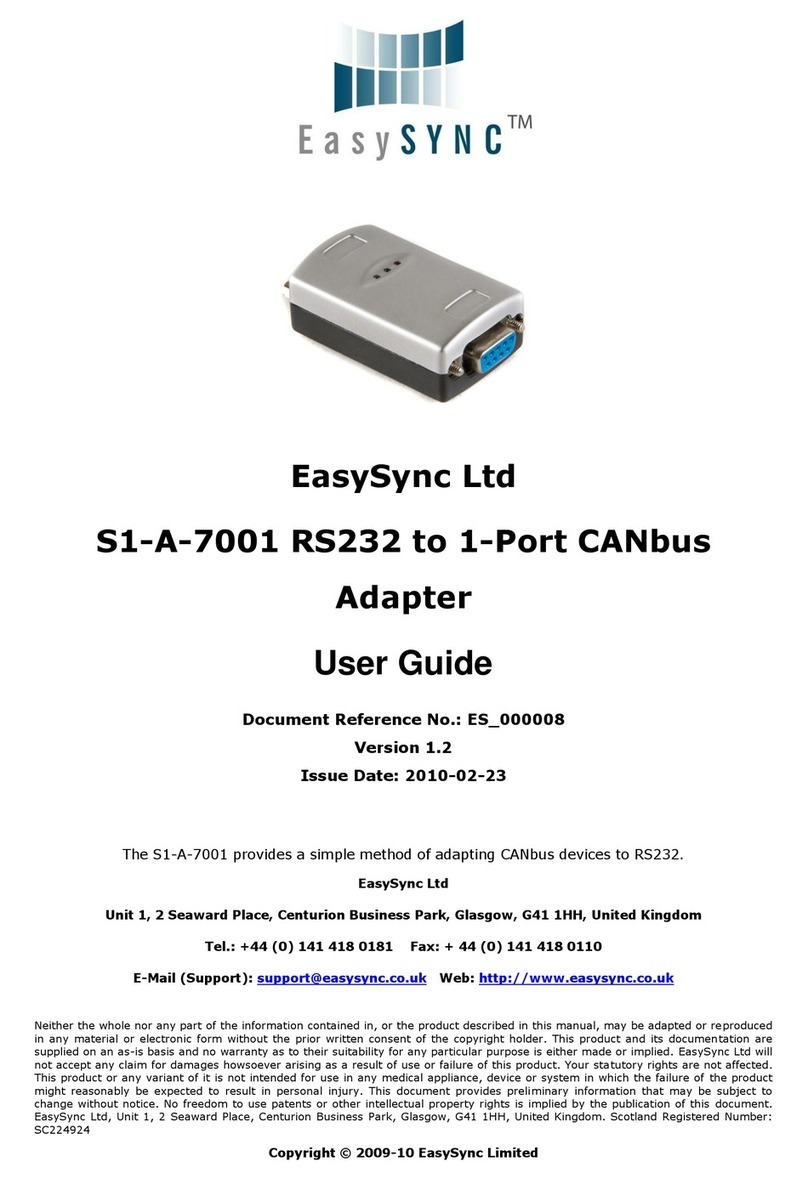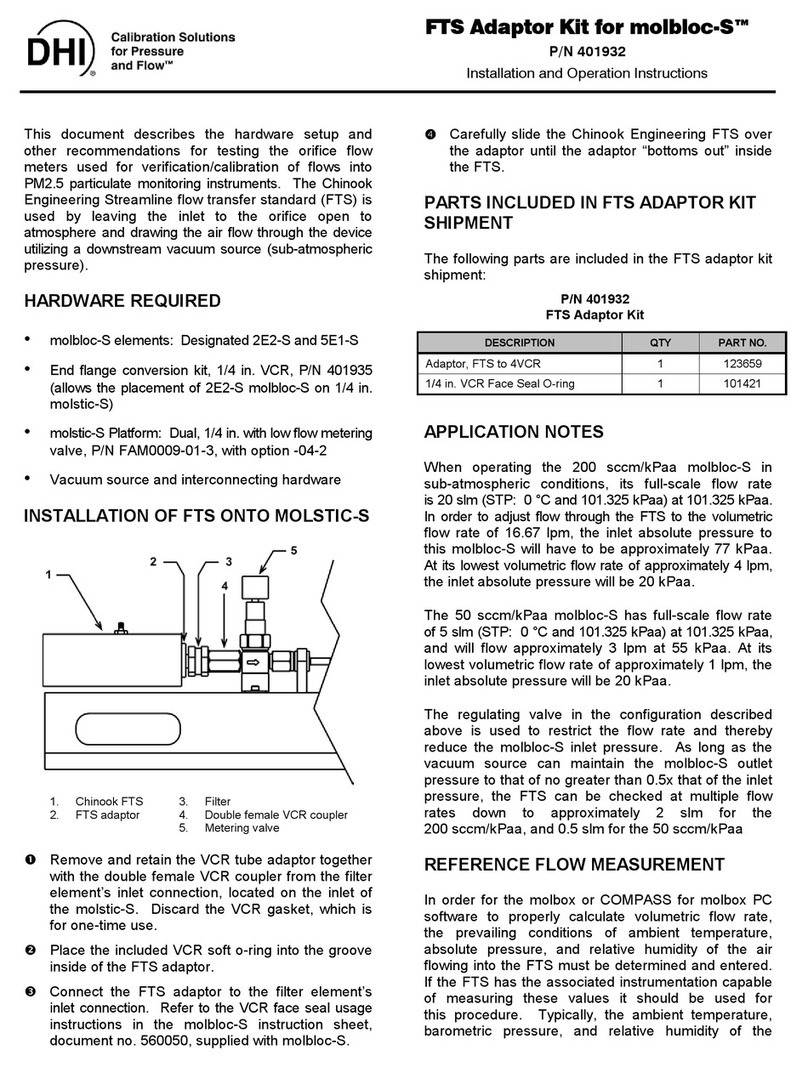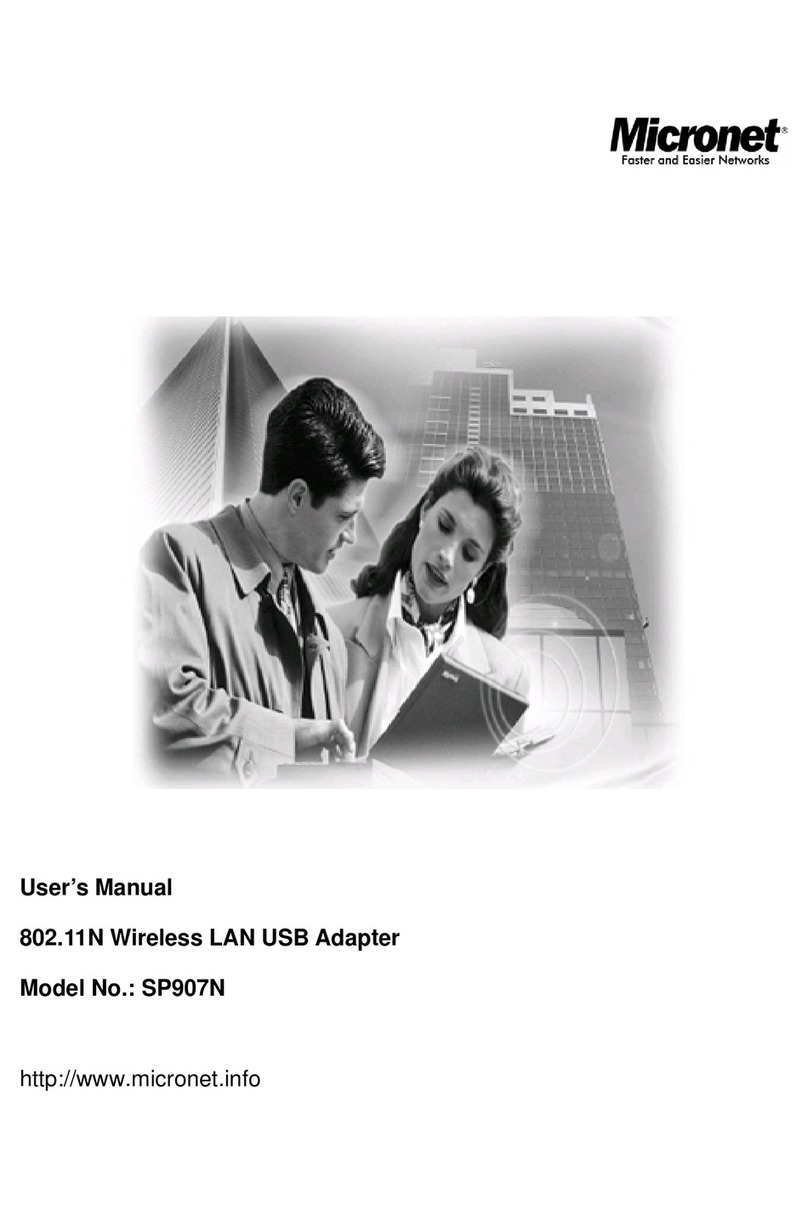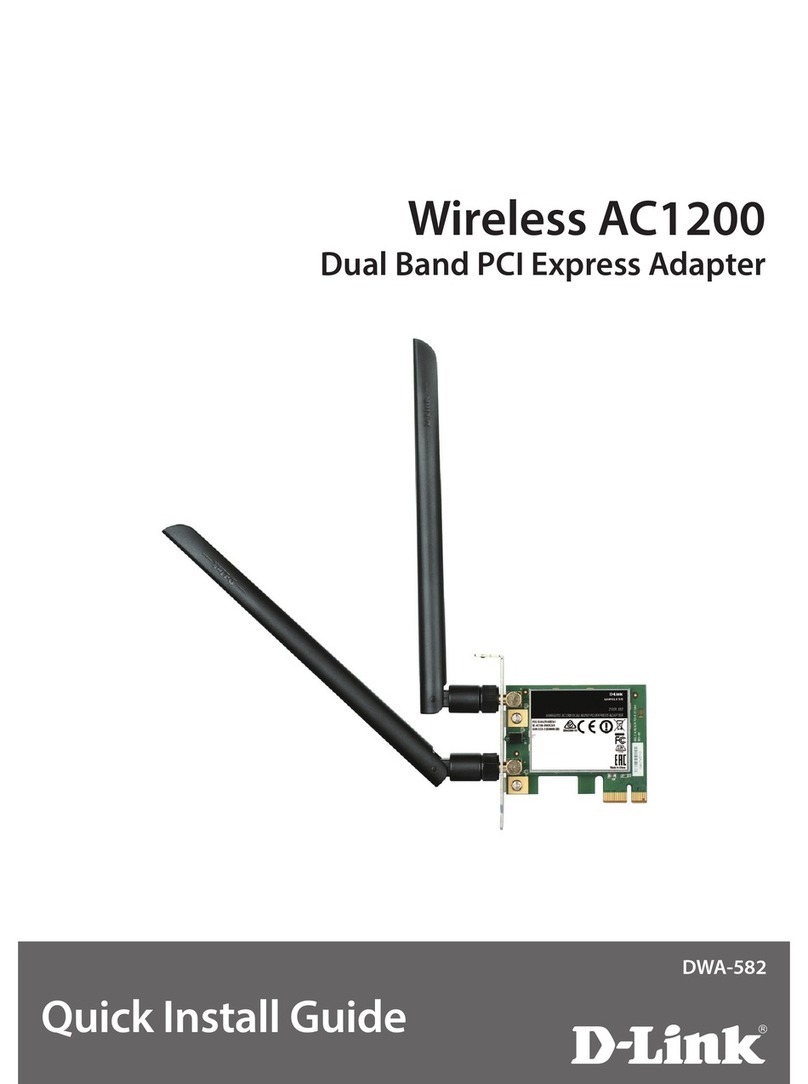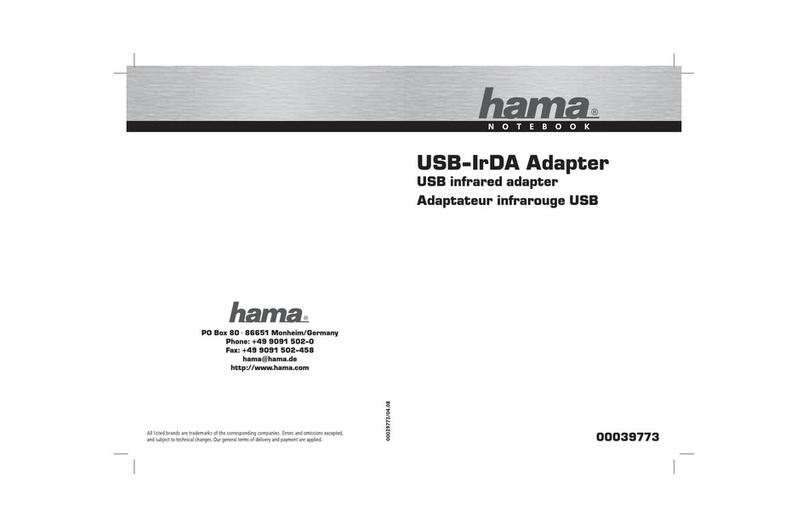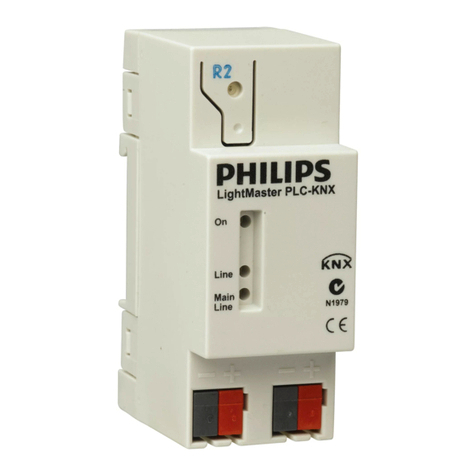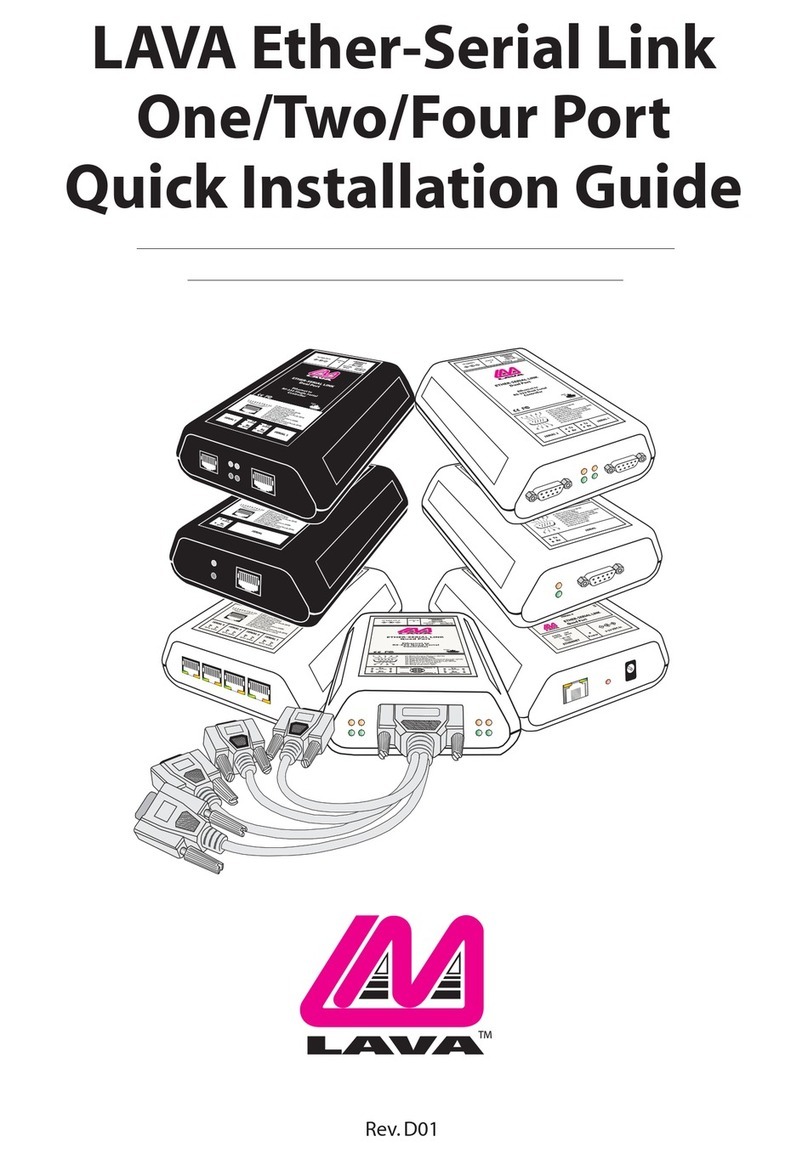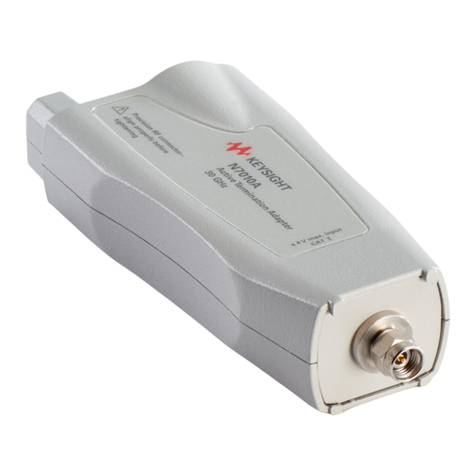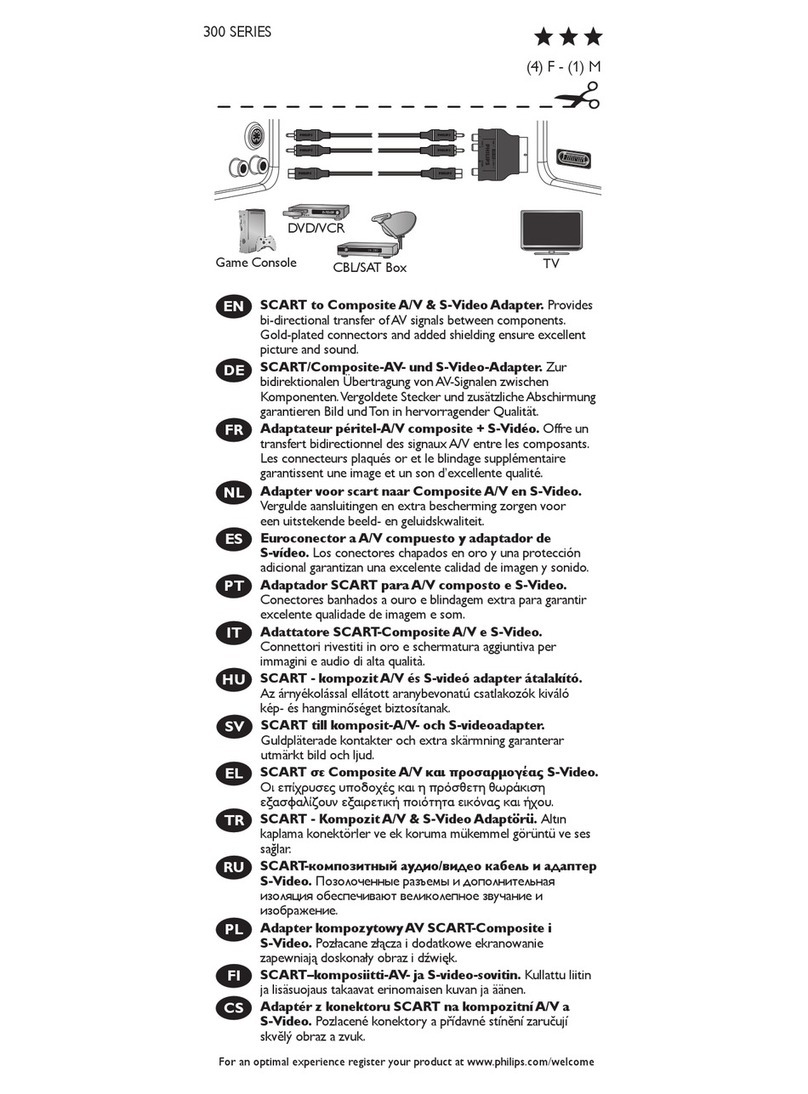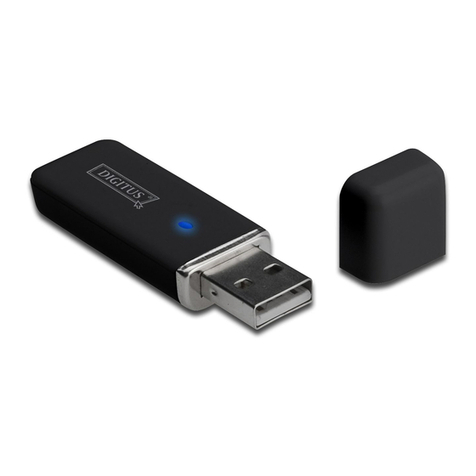Serial Cables PCI-AD-X16HE-PS-MD User manual

PCI-AD-X16HE-PS-MD User’s Guide – Serial Cables 1
Serial Cables PCI Express PCI-AD-X16HE-PS-MD Adapter
PCI-AD-X16HE-PS-MD Transparent Adapter users guide
Version 0.8 (Preliminary)
Date: 5th March 2018

PCI-AD-X16HE-PS-MD User’s Guide – Serial Cables 2

PCI-AD-X16HE-PS-MD User’s Guide – Serial Cables 3
Table of Contents
DISCLAIMER ................................................................................................................................................................ 4
TERMS AND ACRONYMS ............................................................................................................................................. 4
PCI-AD-X16HE-PS-MD HIGH LEVEL SPECIFICATION ..................................................................................................... 5
PACKAGING ................................................................................................................................................................ 6
PRE-INSTALLATION QUESTIONS .................................................................................................................................. 6
PCIE SLOT DETERMINATION ................................................................................................................................................... 6
PCI-AD-X16HE-PS-MD HOST / TARGET CONFIGURATION ........................................................................................................ 6
OPERATING ENVIRONMENT .................................................................................................................................................... 6
CABLE CONNECTIONS ............................................................................................................................................................ 6
PCI Express 3.0 Cables.................................................................................................................................................. 6
MiniSAS-HD Cables ...................................................................................................................................................... 7
Active Optical Cables (AOC) ......................................................................................................................................... 7
INSTALLATION ............................................................................................................................................................ 8
STEP 1 - UNPACK BOARD ....................................................................................................................................................... 8
STEP 2 - CHANGE PCIE BRACKET IF NECESSARY .......................................................................................................................... 8
STEP 3 - CONFIGURE THE BOARD FOR PROPER OPERATION .......................................................................................................... 8
STEP 4 - INSTALL THE ADAPTER CARD ....................................................................................................................................... 8
STEP 5 - INSTALLING AND REMOVING THE CABLE ........................................................................................................................ 8
Connecting the Cable ................................................................................................................................................... 8
Disconnecting the Cable .............................................................................................................................................. 9
STEP 6 - VERIFY INSTALLATION & LEDS .................................................................................................................................... 9
OPERATION ...............................................................................................................................................................10
CONFIGURATION AND DIP SWITCHES ..................................................................................................................................... 10
DIP Switch Bank – Configuration ............................................................................................................................... 10
USE CASES ........................................................................................................................................................................ 11
Use Case A - 1 Host – Single Expansion Configuration .............................................................................................. 11
Use Case B – 1 Host - Dual Expansion Configuration ................................................................................................. 12
Use Case C – 1 Host - Quad Expansion Configuration ............................................................................................... 12
EEPROM AND FIRMWARE UPGRADE .................................................................................................................................... 13
IDENTIFYING THE CARD ........................................................................................................................................................ 13
SUPPORT .............................................................................................................................. ERROR! BOOKMARK NOT DEFINED.
TECHNICAL INFORMATION ........................................................................................................................................16
SIMPLIFIED SCHEMATICS ...................................................................................................................................................... 16
PCIE CABLE PORT SIGNALS .................................................................................................................................................. 17
EXTERNAL PCIE X4 CABLE CONNECTOR PIN-OUT ..................................................................................................................... 17
PCIE CABLE PORT MAPPING ................................................................................................................................................ 17
PCI-AD-X16HE-PS-MD PCIE X16 EDGE CONNECTOR PIN-OUT ............................................................................................... 18
COMPLIANCE AND REGULATORY TESTING .................................................................................................................19
LIMITED WARRANTY..................................................................................................................................................20
WARRANTY PERIOD ............................................................................................................................................................ 20
COVERAGE ........................................................................................................................................................................ 20
SERVICE PROCEDURE .......................................................................................................................................................... 20

PCI-AD-X16HE-PS-MD User’s Guide – Serial Cables 4
DISCLAIMER
SERIAL CABLES RESERVES THE RIGHT TO MAKE CHANGES WITHOUT FURTHER NOTICE TO ANY OF ITS PRODUCTS TO IMPROVE
RELIABILITY, FUNCTION, OR DESIGN.
TO THE FULLEST EXTENT PERMITTED BY LAW, SERIAL CABLES WILL NOT BE LIABLE FOR ANY INDIRECT, INCIDENTAL, SPECIAL OR
CONSEQUENTIAL DAMAGES (INCLUDING LOST PROFITS, LOST DATA, OR LOSS OF USE) ARISING OUT OF ANY USE OF SERIAL
CABLES’S PRODUCTS, SOFTWARE OR SERVICE PROVIDED. SERIAL CABLES’S MAXIMUM LIABILITY WILL NOT EXCEED THE TOTAL
AMOUNT PAID FOR THE PRODUCT BY THE PURCHASER.
PCI Express External Cabling specification 3.0 is as of the release of PCI-AD-X16HE-PS-MD not completed and ratified by the PCI-SIG.
The PCI-AD-X16HE-PS-MD is designed to the new specification, but Serial Cables cannot guarantee the card will be compliant to the
final 1.0 version. Serial Cables firmware tools can update the CMI implementation.
LIFE SUPPORT POLICY
SERIAL CABLES PRODUCTS ARE NOT AUTHORIZED FOR USE AS CRITICAL COMPONENTS IN LIFE SUPPORT DEVICES.
ENVIRONMENTAL POLICY
Serial Cables is minimizing the amount of printed documentation and software CDs in its shipments; please download additional
documentation and software from www.SerialCables.com.
Terms and acronyms
Important terms and acronyms used in this manual
AOC Active Optical Cable. PCIe fiber cable assembly.
CMI Cable Management Interface. The 2-wire management interface for communication between subsystems
connected by a PCIe 3.0 cable. Details can be found in the PCI-SIG External Cabling Specification 3.0.
CMI Controller Microcontroller on the PCI-AD-X16HE-PS-MD used to manage and implement the CMI communications.
eXpressWare Serial Cabless software stack for PCIe clustering and IO. Please visit www.SerialCables.com for more
information.
Host mode The card is installed in a root complex / Host PC.
Lane One PCI Express Lane contains a differential pair for transmission and a differential pair for reception.
Link A collection of one or more PCI Express Lanes providing the communication path between an Upstream and
Downstream Port.
MiniSAS-HD Standard cable without CMI support.
PCIe 3.0 cable Cable compliant to the preliminary PCI-SIG External Cabling Specification 3.0. Support for CMI.
Port PCIe Cable port. The PCI-AD-X16HE-PS-MD has four x4 ports, named P1, P2, P3, P4. These ports can be merged
to two x8 ports, or one x16 port. The physical ports are identified by text on the PCIe brackets.
Target mode The card is installed in an expansion chassis
Wake A mechanism used by a downstream device to request the reapplication of main power when in the L2 Link
state.

PCI-AD-X16HE-PS-MD User’s Guide – Serial Cables 5
PCI-AD-X16HE-PS-MD High Level Specification
The PCI-AD-X16HE-PS-MD is a low profile, half-length PCIe adapter that can be configured as a Transparent Host Adapter card or a
Target adapter card. Once installed in any server’s or PC’s PCI Express compliant slot, a PCI-AD-X16HE-PS-MD can connect to
another PCI-AD-X16HE-PS-MD configured for Transparent Target operation or any target device compliant to the PCI Express
External Cabling Specification 3.0. The PCI-AD-X16HE-PS-MD configured as a Transparent Target card can be installed in a PCI
Express compliant expansion upstream slot. Please contact Serial Cables for a list of compliant expansion chassis. The PCI-AD-
X16HE-PS-MD supports PCIe Gen1, Gen2 and Gen3 speeds and x1, x2, x4, x8 and x16 link-widths. The card will operate at the
highest common speed shared between the slot and the card (Gen3) and the widest common link-width (x16).
PCI Express Base Specification, Rev. 3.1.
PCI Express CEM Specification, Rev. 3.0.
PCI Express External Cabling specification 3.0 (Work in progress, rev 0.7)
PCI Express Gen3 8.0 GT/s per lane signaling – 128 GT/s total signaling.
PCI Express Gen3 x16 edge connector. The card installs in any PCI Express slot that has a physical x16
connector.
Compliant with PCI Express Gen1 through Gen3 computers and IO systems, auto detection.
The PCI-AD-X16HE-PS-MD supports transparent connections to IO systems (Host and Target operation).
Quad SFF-8644 cable connector
Cable port configurations, up to
o One x16
o Two x8
o Four x4
Microsemi Switchtec PFX PCI Express Gen3 chipset.
170 nanosecond cut-through latency port to port.
Support for MiniSAS-HD copper cables between PCI-AD-X16HE-PS-MD cards.
Support for PCI Express 3.0 copper cables with CMI.
Support for active optical fibers up to 100 meters.
Low profile, Half-length - PCI Express Electromechanical Specification, Rev 3.0.
Dimensions 167.65mm (6.600 inches) x 68.90 mm (2.731 inches)
Comes with both low profile and standard profile PCI Express bracket.
Host clock isolation. Automatic support for host running CFC or SSC mode.
VAUX powered board management controllers for flexible configuration and cable management.
Flash recovery option. PFX Multi configuration support.
Power consumption:
o 12 Volt: Max 19.6 Watts without AOC attached.
o 12 Volt: Max 26 Watts with 4 AOCs attached
o +3.3 Volt: Not connected
o +3.3 Volt AUX: 1 W
Port power supply (per cable port): 3.3 Volt +/- 5%, 0.6 A
Operating Temperature: 0°C - 55°C (32°F - 131°F), Air Flow: 150 LFM
Operating Temperature with AOC: 0°C - 45°C (32°F - 113°F), Air Flow: 150 LFM
Operating Temperature: 0°C - 50°C (32°F - 122°F), Air Flow: ~0 LFM
Relative Humidity: 5% - 95% (non- condensing)
Regulatory:
o CE
o EN-55032, EN 55024, Class A.
o RoHS
o FCC 15 Subpart B Class A.
o WEEE
o Pending Korean KC mark

PCI-AD-X16HE-PS-MD User’s Guide – Serial Cables 6
Packaging
The PCI-AD-X16HE-PS-MD includes the following components.
PCI-AD-X16HE-PS-MD Adapter Board
Low profile bracket
Anti-static bag
Getting started guide
Pre-Installation Questions
Certain steps should be taken prior to installing the PCI-AD-X16HE-PS-MD. You should determine the following configuration
requirements.
Which PCIe slot and system will the card be installed in?
Will the board act as a host adapter or target adapter?
What is the speed and link width of the slot that the card will be installed in?
What is the operating environment in which the card will be installed?
What type and length of cables will be used?
How to establish proper operational conditions, temperature and air-flow.
PCIe Slot Determination
The PCI-AD-X16HE-PS-MD supports PCIe Gen1, Gen2 and Gen3 speeds and x1, x2, x4, x8 and x16 link-widths. The slot width and
speed will affect the performance of the card. The card can be physically installed in a x4, x8 or x16 connector. The card will auto
configure to the slot speed and width.
PCI-AD-X16HE-PS-MD Host / Target Configuration
The PCI-AD-X16HE-PS-MD can act as either a host adapter or target adapter. The PCI-AD-X16HE-PS-MD has a DIP switch bank to
control these functions. The DIP switch labeled SW1 can be found close to the upper edge of the board. The main configuration
options are host or target operations . The default DIP switch setting is transparent host x16 operations. Additional settings are
target operations, two x8 links, four x4 links, alternativce edge clock routing and quad edge target.
Operating Environment
To maximize life time for the product and maintain the warranty, please honor the specified operating temperature and make sure
the specified air flow is present. Special care should be considered when PCI-AD-X16HE-PS-MD is used in office type cabinets in
combination with other high energy consuming PCIe devices, e.g. not active cooled GPUs:
Operating Temperature: 0°C - 55°C (32°F - 131°F), Air Flow: 150 LFM
Operating Temperature with AOC: 0°C - 45°C (32°F - 113°F), Air Flow: 150 LFM
Operating Temperature: 0°C - 50°C (32°F - 122°F), Air Flow: ~0 LFM
Relative Humidity: 5% - 95% (non- condensing)
Cable Connections
The PCI-AD-X16HE-PS-MD is designed to support both long and short copper cables as well as active optical cables (AOC). The
default configuration supports cables between 0.5 and 9 meters or fiber cables. If you are connecting the PCI-AD-X16HE-PS-MD to a
compliant target device not designed by Serial Cables, other settings or limitations may apply.
The PCI-AD-X16HE-PS-MD cable connector is compliant to the SFF-8644 industry specification and supports standard x4/x8 Mini-
SAS HD cables or x4/x8 PCI Express 3.0 cables compliant to the PCIe External Cabling Specification 3.0. Four x4 or two x8 cables are
needed for full PCIe x16 connectivity.
PCI Express 3.0 Cables
When used with cables compliant to the new PCIe External Cable standard 3.0, the PCI-AD-X16HE-PS-MD card will transmit a CMI
Reset message downstream. The card can be connected to a PCI-AD-X16HE-PS-MD in Target mode or any PCIe device compliant to
the new cable standard. Support for additional CMI messages are being implemented and will be available with the next firmware
maintenance release, please contact Serial Cables for details.

PCI-AD-X16HE-PS-MD User’s Guide – Serial Cables 7
MiniSAS-HD Cables
When used with standard MiniSAS-HD cables that does not support the new CMI functionality, the onboard CPU will synthetize a
PCIe #CPERST and forward it to the downstream PCI-AD-X16HE-PS-MD card. CWAKE and CPOWERON is not supported using
standard MiniSAS-HD cables.
Active Optical Cables (AOC)
The PCI-AD-X16HE-PS-MD card is compliant with active fiber optic cables up to 100 meters. Special configuration of the card needs
to be performed for working with long fibers (Contact Serial Cables). CWAKE and CPOWERON is not supported using standard AOC
cables.

PCI-AD-X16HE-PS-MD User’s Guide – Serial Cables 8
Installation
Step 1 - Unpack board
The PCI-AD-X16HE-PS-MD card is shipped in an anti-static bag to prevent static electricity damage. The card should only be
removed from the bag after ensuring that anti-static precautions are taken. Static electricity from your clothes or
work environment can damage your PCI Express adapter card or your PC. Always wear a grounded anti-static wrist
strap while opening the PC and when the PCI-AD-X16HE-PS-MD is removed from the anti-static bag.
Unpack the PCI-AD-X16HE-PS-MD from the anti-static bag using proper anti-static procedures.
Step 2 - Change PCIe Bracket if necessary
The PCI-AD-X16HE-PS-MD package includes a standard and low-profile PCI Express bracket. By default, the standard height bracket
is installed on the board. If you need to replace the mounted bracket with a low-profile bracket, carefully unscrew the two
mounting screws to remove the full height bracket. Save the two mounting screws and replace the bracket with the low-profile
bracket. Use the two mounting screws to install the low-profile bracket. The screws should be carefully tightened, but be careful
not to over-tighten. Make sure you are properly grounded to avoid static discharges that may destroy the adapter card before
performing this procedure.
Step 3 - Configure the Board for Proper Operation
Set the DIP switch settings for proper operation depends on the firmware. Please refer to the section Configuration and DIP
Switches on page 10 for details.
Step 4 - Install the Adapter Card
Before installing the adapter card, make sure you are properly grounded to avoid static discharges that may destroy your computer
or the adapter card. Ensure you are properly grounded before opening your computer or the anti-static bag
containing the PCI-AD-X16HE-PS-MD. Please follow your computer’s or expansion chassis manual on how to install a
PCI Express card.
The PCI-AD-X16HE-PS-MD Adapter card can be installed into any PCI Express x16 slot. The PCI-AD-X16HE-PS-MD supports PCI
Express Gen1, Gen2 and Gen3 signaling. NOTE: A Gen3 slot is recommended as it typically doubles the performance compared to a
Gen2 slot. The PCI-AD-X16HE-PS-MD is an x16 card, so maximum performance will only be attained if the slot provides full electrical
x16 signaling.
The PCI-AD-X16HE-PS-MD supports hosts using either spread spectrum or constant frequency clocking. The card implements clock
isolation.
Step 5 - Installing and Removing the Cable
Installing and removing cables should be done with both host and expansion system powered off. Please contact your Serial Cables
representative if you intend to continuously connect and disconnect the PCI Express cables.
Connecting the Cable
Please carefully install the cable connector into the connector housing on the PCI-AD-X16HE-PS-MD adapter card. To install the
cable, match the cable house with the connector on the PCI-AD-X16HE-PS-MD adapter card. Use even pressure to insert the
connector until it is secure. Adhere to ESD guidelines when installing the cables to ensure you don’t damage the board. Computer
cables should always use strain relief to protect the connected equipment from excessive force on the cable. This is especially
important for cables between racks. Note that for wider than x4 connections, the same cable-ports (ie port 1 through 4) should be
used on both host and target for each individual cable, to ensure that the cards properly link up as x8 or x16.
The PCI-AD-X16HE-PS-MD supports both copper and active optical cables (AOC). Project targets can be found in Table 1 below.
Long cable qualification in progress, please contact Serial Cables for details.
Cable Speed Distance
Copper MiniSAS-HD Gen3 9 meters
Copper MiniSAS-HD Gen1 12 meters
Copper PCIe 3.0 cable Gen3 TBD

PCI-AD-X16HE-PS-MD User’s Guide – Serial Cables 9
Fiber optic (AOC) Gen3 50 meters / 100 meters
Table 1: Cable Specifications
Disconnecting the Cable
Please carefully pull the release tab to release the cable from the locking latches and gently pull the cable out of the connector
guides.
Step 6 - Verify Installation & LEDs
The PCI-AD-X16HE-PS-MD comes with 4 bi-color LEDs which show the corresponding cable port status according to Table 2: LED
below.
The LEDs are visible through cut-outs in the PCIe bracket on each side of the cable connector block.
LED color Function
Off No cable installed
Yellow Cable installed, no link
Green Cable installed, link gen 3
Green blinking Cable installed, link gen 1/2
Table 2: LED behavior

PCI-AD-X16HE-PS-MD User’s Guide – Serial Cables 10
Operation
Configuration and DIP Switches
The PCI-AD-X16HE-PS-MD has one bank of 8 DIP switches. The default factory setting for the PCI-AD-X16HE-PS-MD is Transparent
Host mode, single (up to x16) link connection.
The PCI-AD-X16HE-PS-MD has DIP switches for setting special modes or operations, the meaning of each DIP switch depends on the
loaded firmware. Please carefully read the documentation shipping with the card before modifying any DIP switch settings. Please
pay close attention to ON and OFF positions written on the DIP switch.
DIP Switch Bank – Configuration
Figure 1: DIP Switch shows the DIP switch for the PCI-AD-X16HE-PS-MD. It is used to
configure the adapter card. Please leave all undocumented DIP switches in the default
position. Table 3: DIP Switch settings shows all the various DIP switch settings for the PCI-
AD-X16HE-PS-MD.
DIP no. Name Description ON OFF Default
1-4 OPT1-4 Configuration selector, details
below
OFF
5
OPT5
CMI Disable
Will disable the CMI
interface.
CMI will be used if a PCIe
3.0 cable is detected
OFF
6 OPT6 Reserved for future use OFF
7
U
RES
Holds the management processors
in reset
Board management is
held in reset
Normal operation
OFF
8 SAFE Enables the card to boot if the
EEPROM has been corrupted
Safe EEPROM Normal operation OFF
Table 3: DIP Switch settings
Note: DIP switch configuration options may be changed in the future versions. Please always consult the latest user
guide for details.
Figure
1
: DIP Switch

PCI-AD-X16HE-PS-MD User’s Guide – Serial Cables 11
Use Cases Summary and Settings
Table 4: Use Case DIP switch settings below gives an overview of the various use cases, settings and limitations.
Use
case
Description Host DIP switch setting Target DIP switch setting
A One Host system having a PCI-AD-X16HE-
PS-MD in Host mode connecting to one
PCI-AD-X16HE-PS-MD in Target mode or a
3rd party expansion system.
OPT1: Transparent ON
Single setting for all Target
configurations except
alternative clock routing
Transparent ON
Target ON
OPT5 on to enable alternative
target clock routing
All other off
B One Host system having a PCI-AD-X16HE-
PS-MD in Host mode connecting to two
PCI-AD-X16HE-PS-MDs in Target mode or
two 3rd party expansion systems.
OPT1: Transparent ON
OPT3 on to enable two x8 links
C
One Host system having a
PCI
-
AD
-
X16HE
-
PS-MD in Host mode connecting to four
PCI-AD-X16HE-PS-MDs in Target mode or
four 3rd party expansion systems.
OPT1:
Transparent ON
OPT4 on to enable four x4 links
Table 4: Use Case DIP switch settings
Use Cases
The PCI-AD-X16HE-PS-MD card may be used as both a Host card and a
Target card. A Host and Target card can be used as a pair or the Host card
can be used with a compliant Target device. The supported use cases and
the DIP switch settings are summarized in Table 4: Use Case DIP switch
settings. Please use the table to identify the correct DIP switch settings.
Use Case A - 1 Host – Single Expansion Configuration
The Host system has a PCI-AD-X16HE-PS-MD adapter configured for Host
operation and a direct x4, x8 or x16 link to a PCI-AD-X16HE-PS-MD
configured for Target operation.
Connecting the cables for single expansion, x16 link
To establish an x16 link, a given port number should be connected to the same port number on the other card.
Always connect a cable from Port #x to Port #x
Port Host A Port Expansion
P1 P1
P2
P2
P3 P3
P4
P4
Table 5: Required x16 cabling
A failure connecting any of the cables will cause the link to re-train to x8 or x4.
Figure
2
: Use Case A

PCI-AD-X16HE-PS-MD User’s Guide – Serial Cables 12
Connecting the cables for single expansion, x8 link
To establish an x8 link, please select one of the alternatives below. Select alternative 1, 2, 3 or 4.
Alternatives Host
Port
Expansion
Port
1 P1 P1
P2 P2
2 P1 P3
P2
P4
3 P3 P1
P4 P2
4
P3
P3
P4
P4
Table 6: Alternative x8 cabling
Connecting the cables for 2 Node Configurations, x4 link
To establish an x4 link when in dual port mode, please connect any port on the Host card
to Port P1 or P4 on the Target card.
Use Case B – 1 Host - Dual Expansion Configuration
The host has a PCI-AD-X16HE-PS-MD adapter configured for Host operation and a direct
x4 or x8 cable connection is used to connect two independent downstream target
systems.
Connecting the cables for Single Node Dual expansion, x8 link
Connect the cables between the host and expansion as described above for x8
connectivity. Connect the second expansion to the free ports. Always connect port P1 +
P2 to P1 + P2 or P3 + P4
Use Case C – 1 Host - Quad Expansion Configuration
The host has a PCI-AD-X16HE-PS-MD adapter configured for Host mode and a direct x4
cable connection is used between the Host systems and each expansion Chassis. The
PCI-AD-X16HE-PS-MD in the Expansion Chassis is configured for Target mode.
DIP Switch setting for Single Node Four Expansion Configuration
NB: Please contact Serial Cables for more information on DIP switches for this setting.
Not supported by the current firmware.
Connecting the cables for Single Node Four expansion, x4 link
Connect any port on the Host card to port P1 or P4 on the target card.
Figure
3
: Use Case B
Figure
4
: Use Case C

PCI-AD-X16HE-PS-MD User’s Guide – Serial Cables 13
EEPROM and Firmware Upgrade
The PCI-AD-X16HE-PS-MD design uses a microcontroller to implement the PCIe CMI protocol and other maintenance functions.
Serial Cables may from time to time publish updated firmware for the microcontroller or EEPROM data for the card. Please contact
Serial Cables for instructions on how to upgrade the PCI-AD-X16HE-PS-MD. Please note that standard Microsemi firmware tools
cannot be used to upgrade the firmware.
Identifying the Card
The card has a label-sticker with the serial number in the format ‘PCI-AD-X16HE-PS-MD-YY-ZZZZZZ’, where YY denotes the card
revision (e.g. BB) and ZZZZZZ denotes the serialized production number (e.g. 012345) – this whole string makes up the serial
number of the card (i.e. PCI-AD-X16HE-PS-MD-BB-012345).
You can also get this information using lspci in Linux:
First, identify the devices for the Serial Cables Host card:
Than run lspci, and identify the card. It will show up as something like
# lspci | grep “Device 8532”
01:00.0 PCI bridge: PMC-Sierra Inc. Device 8532
01:00.1 Memory controller: PMC-Sierra Inc. Device 8532
02:00.0 PCI bridge: PMC-Sierra Inc. Device 8532

PCI-AD-X16HE-PS-MD User’s Guide – Serial Cables 14
# lspci -s 1:0.0 -v
01:00.0 PCI bridge: PMC-Sierra Inc. Device 8532 (prog-if 00 [Normal decode])
Flags: bus master, fast devsel, latency 0, IRQ 25
Bus: primary=01, secondary=02, subordinate=03, sec-latency=0
I/O behind bridge: 00002000-00002fff
Prefetchable memory behind bridge: 00000000df200000-00000000df3fffff
Capabilities: [40] Express Upstream Port, MSI 00
Capabilities: [7c] MSI: Enable+ Count=1/8 Maskable- 64bit+
Capabilities: [8c] Power Management version 3
Capabilities: [94] Subsystem: Serial Cables Interconnect Solutions AS Device 0830
Capabilities: [100] Advanced Error Reporting
Capabilities: [138] Power Budgeting <?>
Capabilities: [148] #12
Capabilities: [178] #19
Capabilities: [1a4] Device Serial Number 00-00-42-42-00-00-00-ff
Capabilities: [1b0] Latency Tolerance Reporting
Capabilities: [1b8] Access Control Services
Capabilities: [7f8] Vendor Specific Information: ID=ffff Rev=1 Len=808 <?>
Kernel driver in use: pcieport
Kernel modules: shpchp
# lspci -s 1:0.1 -v
01:00.1 Memory controller: PMC-Sierra Inc. Device 8532
Subsystem: Serial Cables Interconnect Solutions AS Device 0830
Flags: bus master, fast devsel, latency 0
Memory at f7800000 (64-bit, non-prefetchable) [size=4M]
Capabilities: [40] MSI: Enable- Count=1/4 Maskable- 64bit+
Capabilities: [50] MSI-X: Enable- Count=4 Masked-
Capabilities: [5c] Power Management version 3
Capabilities: [64] Express Endpoint, MSI 00
Capabilities: [100] Advanced Error Reporting
Capabilities: [138] Device Serial Number 00-00-42-42-00-00-00-ff
Capabilities: [144] Access Control Services
# lspci -s 2:0.0 -v
02:00.0 PCI bridge: PMC-Sierra Inc. Device 8532 (prog-if 00 [Normal decode])
Flags: bus master, fast devsel, latency 0, IRQ 26
Bus: primary=02, secondary=03, subordinate=03, sec-latency=0
I/O behind bridge: 00002000-00002fff
Prefetchable memory behind bridge: 00000000df200000-00000000df3fffff
Capabilities: [40] Express Downstream Port (Slot+), MSI 00
Capabilities: [7c] MSI: Enable+ Count=1/8 Maskable- 64bit+
Capabilities: [8c] Power Management version 3
Capabilities: [94] Subsystem: Serial Cables Interconnect Solutions AS Device 0830
Capabilities: [100] Advanced Error Reporting
Capabilities: [138] Power Budgeting <?>
Capabilities: [148] #12
Capabilities: [178] #19
Capabilities: [1a4] Device Serial Number 00-00-42-42-00-00-00-ff
Capabilities: [1b0] Downstream Port Containment
Capabilities: [1bc] Access Control Services
Capabilities: [7f8] Vendor Specific Information: ID=ffff Rev=1 Len=808 <?>
Kernel driver in use: pcieport
Kernel modules: shpchp

PCI-AD-X16HE-PS-MD User’s Guide – Serial Cables 15
Second, do
This shows the card as revision 0x4242 (hexadecimal values of the ‘BB’ letters in the ASCII table), with the production number
0x000000ff (00000255 in decimal).
# lspci
-
s 1:0.0
-
v | grep
-
E "Subsystem|Serial"
Capabilities: [a4] Subsystem: Serial Cables Interconnect Solutions AS Device 0832
Capabilities: [100] Device Serial Number 00-00-42-42-00-00-00-ff

PCI-AD-X16HE-PS-MD User’s Guide – Serial Cables 16
Technical Information
Simplified schematics
The figure below shows the PCI-AD-x16HE-PS-MD simplified schematics. Only the main functions are shown.
Figure 5: PCI-AD-X16HE-PS-MD Simplified Schematics

PCI-AD-X16HE-PS-MD User’s Guide – Serial Cables 17
PCIe Cable Port Signals
The external PCI Express SFF-8644 cable connector supports the following signals:
PETpN/PETnN: PCI Express Transmitter pairs, labeled where N is the Lane number (starting with 0); “p” is the true signal
while “n” is the complement signal.
PERpN/PERnN: PCI Express Receiver pairs, labeled where N is the Lane number (starting with 0); “p” is the true signal
while “n” is the complement signal.
PWR: Power to support AOC and signal conditioning components within the cable assembly.
MGTPWR: Power supplied to the connector for cable management components that are needed while the link is not
active. This needs to be active if the subsystem has power.
CBLPRSNT#: Cable present detect, an active-low signal pulled-down by the cable when it is inserted into the PCI-AD-
X16HE-PS-MD connector.
CADDR: Signal used to configure the upstream cable management device address.
CINT#: Signal asserted by the cable assembly to indicate a need for service via the CMI controller.
CMISDA: Management interface data line. Used for both initial link setup and sideband messages when used with CMI
compliant cables.
CMISCL: Management interface clock line. Used for both initial link setup and sideband messages when used with CMI
compliant cables.
External PCIe x4 Cable Connector Pin-Out
Column
Row 9 8 7 6 5 4 3 2 1
D GND PETn2 PETp2 GND PETn1 PETp1 GND MGTPWR PWR
C
GND
PETn3
PETp3
GND
PETn0
PETp0
GND
CMISDA
CMISCL
B GND PERn2 PERp2 GND PERn1 PERp1 GND CBLPRSNT# PWR
A GND PERn3 PERp3 GND PERn0 PERp0 GND CINT# CADDR
Table 7; External PCIe x4 cable Pin-Out
PCIe Cable Port Mapping
The PCI-AD-X16HE-PS-MD card have a quad SFF-8644 connector. The table below show the signal / port map.
Table 8 : PCIe Cable Port Mapping
Cable Port x16 Dual x8 Quad x4 PCIe 3.0 Cable Pin
L15 L7 L3 TX3/RX3
L14 L6 L2 TX2/RX2
L13 L5 L1 TX3/RX1
L12 L4 L0 TX0/RX0
L11 L3 L3 TX3/RX3
L10 L2 L2 TX2/RX2
L9 L1 L1 TX3/RX1
L8 L0 L0 TX0/RX0
L7 L7 L3 TX3/RX3
L6 L6 L2 TX2/RX2
L5 L5 L1 TX3/RX1
L4 L4 L0 TX0/RX0
L3 L3 L3 TX3/RX3
L2 L2 L2 TX2/RX2
L1 L1 L1 TX3/RX1
L0 L0 L0 TX0/RX0
Lx – PCIe lane X, Cable port is ref PCIe bracket marking
1
2
3
4

PCI-AD-X16HE-PS-MD User’s Guide – Serial Cables 18
PCI-AD-X16HE-PS-MD PCIe x16 Edge Connector Pin-Out
The PCI-AD-X16HE-PS-MD Edge connector follows PCI Express CEM Specification, Rev. 3.0 section 6 – Card Connector Specification.
Signal names are shown in Table 9. In host mode, the PCI-AD-X16HE-PS-MD is PCIe SIG compliant. The signals in bold are bi-
directional, where the direction depends on if the card is configured for host or target mode. In the case where the PXH832 is
configured as a target adapter in an expansion chassis, it will provide a 100 MHz, non-SSC, reference clock on the REFCLK+/REFCLK-
pins. The shaded signals TDI and TDO are normally tri-stated, but can be configured to provide a 100 MHz, non-SSC, reference clock
for PCIe expansion chassis utilizing these pins instead.
Pin Side B Description Side A Description
1 +12 PRSNT1#
2 +12 +12
3 +12 +12
4 GND GND
5 SMCLK BMC TCK NC
6 SMDAT BMC TDI O Ref clock +
7 GND TDO O Ref clock -
8 +3,3V PWR TMS NC
9 TRST# NC +3,3 PWR
10 +3,3V aux Standby
PWR
+3,3 PWR
11 WAKE# Wake up PERST# Reset
12 NC GND
13 GND REFCLK+ Ref clock +
14 PERp0 REFCLK- Ref clock -
15 PERn0 GND
16 GND PETp0
17 PRSNT2# PETn0
18 GND GND
19 PERp1 NC
20 PERn1 GND
21 GND PETp1
22 GND PETn1
23 PERp2 GND
24 PERn2 GND
25 GND PETp2
26 GND PETn2
27 PERp3 GND
28 PERn3 GND
29 GND PETp3
30 NC PETn3
31 PRSNT2# GND
32 GND NC
33 PERp4 NC
34 PERn4 GND
35 GND PETp4
36 GND PETn4
37 PERp5 GND
38 PERn5 GND
39 GND PETp5
40 GND PETn5
41 PERp6 GND
42 PERn6 GND
43 GND PETp6
Pin Side B Description Side A Description
44 GND PETn6
45 PERp7 GND
46 PERn7 GND
47 GND PETp7
48 PRSSNT2# PETn7
49 GND GND
50 PERp8 NC
51 PERn8 GND
52 GND PETp8
53 GND PETn8
54 PERp9 GND
55 PERn9 GND
56 GND PETp9
57 GND PETn9
58 PERp10 GND
59 PERn10 GND
60 GND PETp10
61 GND PETn10
62 PERp11 GND
63 PERn11 GND
64 GND PETp11
65 GND PETn11
66 PERp12 GND
67 PERn12 GND
68 GND PETp12
69 GND PETn12
70 PERp13 GND
71 PERn13 GND
72 GND PETp13
73 GND PETn13
74 PERp14 GND
75 PERn14 GND
76 GND PETp14
77 GND PETn14
78 PERp15 GND
79 PERn15 GND
80 GND PETp15
81 PRSNT2# PETn15
82 NC GND
Table 9: PCIe Edge Connector Pin-Out

PCI-AD-X16HE-PS-MD User’s Guide – Serial Cables 19
Compliance and Regulatory Testing
EMC Compliance
The Serial Cables PCI Express PCI-AD-X16HE-PS-MD adapter is tested to the following relevant test standards
for PCI Express cards, telecommunication and industry equipment installed in a standard PC:
EN 55032
EN 55024, Class A
This does not ensure that it will comply with these standards in any random PC. It is the responsibility of the integrator to ensure
that their products are compliant with all regulations where their product will be used.
RoHS Compliance
The Serial Cables PCI-AD-X16HE-PS-MD is RoHS compliant. A Compliance certificate issued by the
manufacturer is available upon request.
FCC Class A
This equipment is tested and found to comply with the limits for a Class A digital device, pursuant to part 15 of the FCC
Rules.

PCI-AD-X16HE-PS-MD User’s Guide – Serial Cables 20
Limited Warranty
Serial Cables warrants this product to be free from manufacturing defects under the following terms:
Warranty Period
Serial Cables warrants the product for one (1) year from the date of purchase. Extended warranties are available.
Coverage
To the extent permitted by applicable law, this warranty does not apply to:
Damages caused by operator error or non-compliance with instructions available for the product.
Use or attempt to use or program firmware not approved by Serial Cables.
Damage which results from accident, abuse, misuse, neglected improper handling or improper installation; moisture,
corrosive environments, high voltage surges, shipping or abnormal working conditions.
Damages which results from violating the specified operating or storage temperatures and airflow.
Damages caused by acts of nature, e.g. floods, storms, fire, or earthquakes.
Damage caused by any power source out of range or not provided with the product.
Normal wear and tear.
Attempts to repair, modify, open or upgrade the product by personnel or agents not authorized by Serial Cables.
Products that have had the product serial number tampered with or removed.
Damage to the product caused by products not supplied by Serial Cables.
Service Procedure
If the product proves defective during the Warranty Period, you should contact the seller that supplied you with the product, or if
you purchased it directly from Serial Cables, email s[email protected] to obtain a valid RMA number and instructions.
Products returned to Serial Cables without a proper RMA number will not be serviced under this warranty.
Table of contents
Other Serial Cables Adapter manuals
